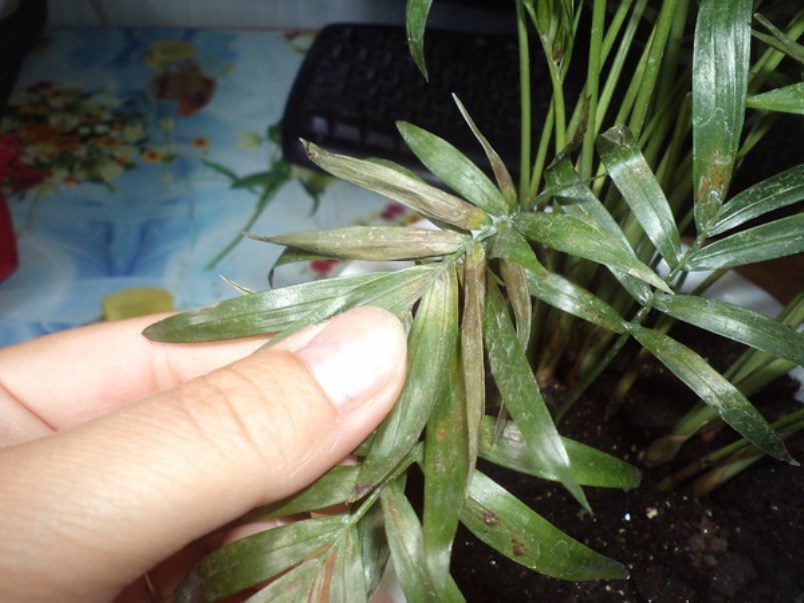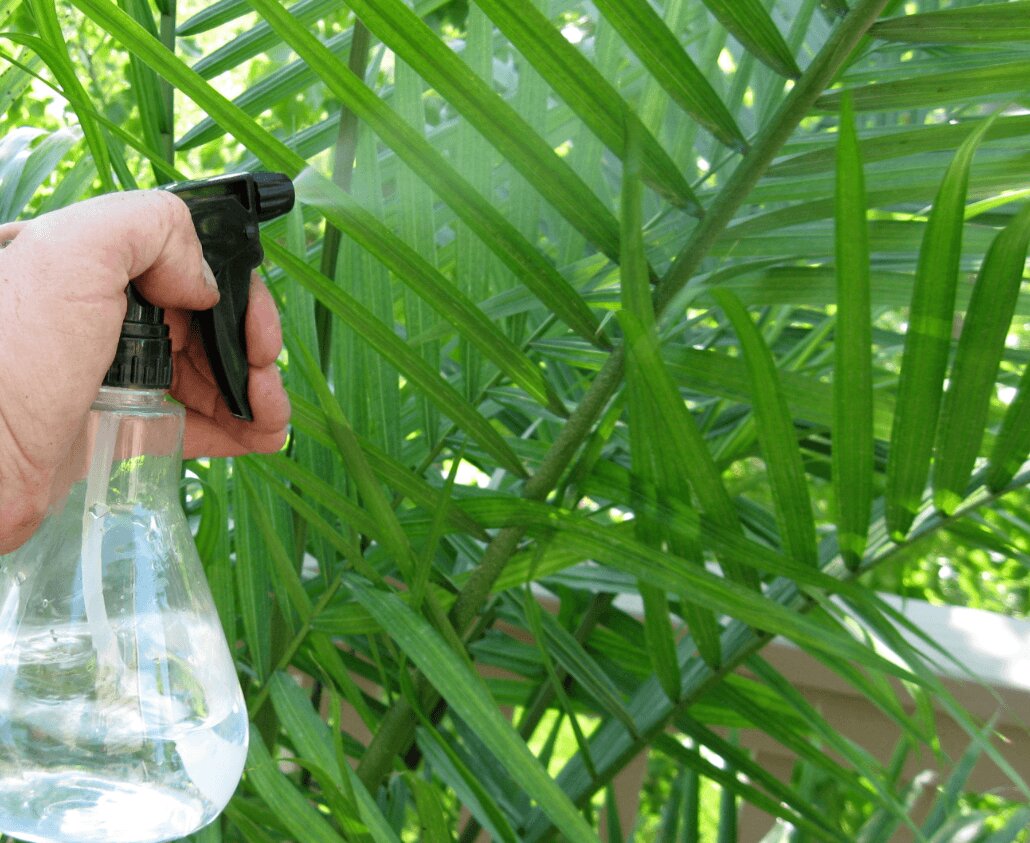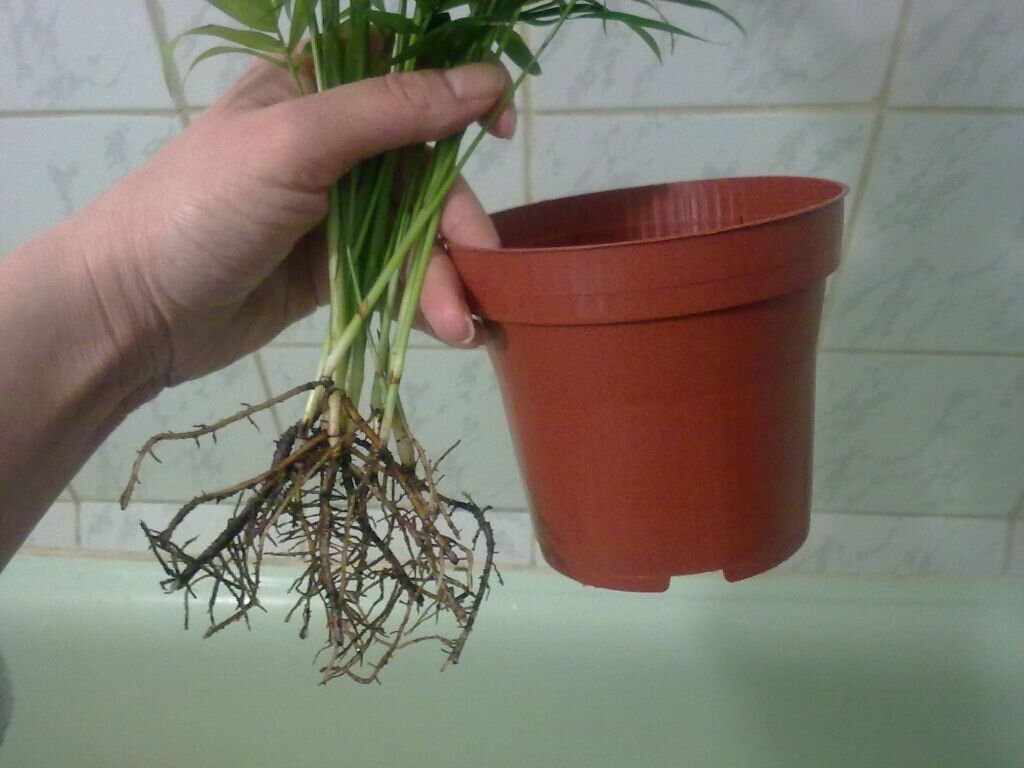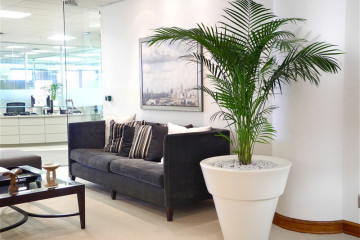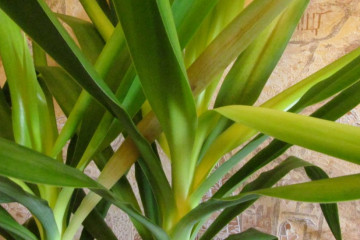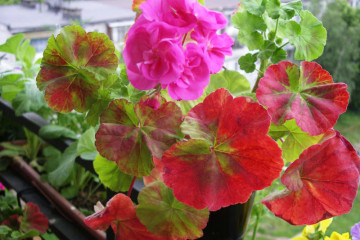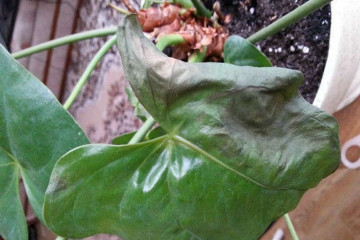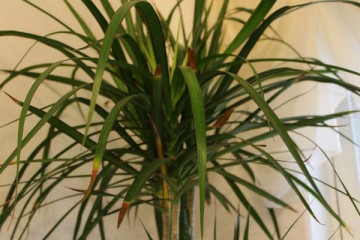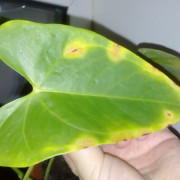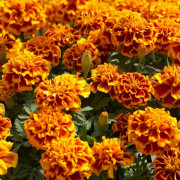Chamedorea flower - leaves dry, what to do
Content:
Hamedorea, or bamboo palm, is a sturdy, beautiful plant with vibrant green foliage. The native of the tropics decorates any living space, as well as the interiors of offices and schools. Wild crops are found in South and Central America, in Mexico. A mature tree can reach a height of 2 meters.
Growing an exotic beauty at home is popular and has its own developmental characteristics. Very often there are signs of the disease or the leaves of chamedorea become discolored, in such a situation you need to know what is the reason and how to cope with the problem.
Hamedorea: home care, leaf tips dry
An unpretentious palm tree gets used to various conditions of detention, but reacts poorly to their abrupt change. Subject to the rules of caring for chamedorea at home, the leaves do not dry out, and diseases do not occur.
Diseases
The plant can get sick for several reasons:
- with improper lighting;
- due to insufficient or excessive watering;
- if the root system does not have enough space in the pot;
- with sudden changes in temperature;
- due to unsuitable soil composition.
Many diseases are easy enough to cope with, and serious ailments require long-term treatment.
In chamedorea, the tips of the leaves begin to dry if the soil substrate is dense enough or contains a lot of calcium. If you stop feeding or transplant a palm tree, the health of the plant will be restored.
Improper watering may be the cause of this condition. Restoring the regularity of irrigation and normalizing the amount of water will help correct the situation.
Pests
The bamboo palm is often plagued by insect pests. If the air at home or in the office is too dry, it can trigger the appearance of spider mites. When damaged, shoots and leaves are entangled in cobwebs, which are easy to see upon visual inspection.
Unstable plant immunity attracts scale insects, thrips and aphids. Small insects feed on the juice of shoots and leaves, which subsequently causes chamedorrhea diseases. You can get rid of pests by treating with soapy water, as well as using special fungicidal preparations.
Soil moisture
The domestic palm tree is quite demanding on soil moisture. It should be watered at least 2-3 times a week. Overflowing can harm the palm tree. Root decay is the result of excessive moisture in the soil. If black dots appear on the leaves at the bottom of the chamedorea stem, this is a clear sign of waterlogging of the soil. In winter, it is recommended to water the plant no more than 1 time per week.
The palm tree loves high humidity. If the leaves begin to dry and darken, then it's time to take action. Spraying foliage and air from a spray bottle will help solve the problem. You need to do it every morning.Then each leaf should be wiped with a napkin. This procedure will allow the leaves to breathe, and will also help get rid of accumulated dust and dirt.
Air temperature
When growing a plant, it is important to maintain the optimum indoor temperature. Darkening and drying of foliage can occur due to the cool content. In this case, the pot with the palm tree must be moved closer to the heating source or the heater must be turned on. The bamboo palm tree is tall, so you don't need to put it on the windowsill. The best place would be a curbstone near the window.
Decay of roots
If you do not take care of the plant according to the rules, do not monitor the composition of the soil in the pot and constantly overmoisten it, then the roots begin to rot. If this problem occurs, the only solution is to transplant a hamedorea.
The soil for growing a flower should be loose, light, it is good for oxygen and water to pass to the root system. The plant is transplanted, after having cleaned the roots from rot and dirt. It is important to treat the root system and container with a potassium manganese solution. The nutrient substrate must be replaced.
If, after transplanting, the leaves of the chamedorea plant dry, and there are smells of rot and dampness in the pot, then the rules of care are violated. Timely rational watering and high-quality soil composition will help protect the palm from root rot.
Other possible problems
The plant needs not only to be watered, fed and transplanted, but also to create certain conditions for its development.
For example, during a dormant period, pruning is required. The lower leaves of a palm tree tend to dry out periodically. The natural process of foliage renewal needs to be regulated with garden tools. Yellowed, faded and dried leaves must be cut off in time. Sections are processed with any alcohol solution.
The strong and hardy chamedorea plant does not require difficult maintenance. If you monitor the temperature and lighting in the room, water in moderation, transplant and cut on time, the flower will decorate any interior. Wide bulky palm leaves will not dry out under normal conditions.

